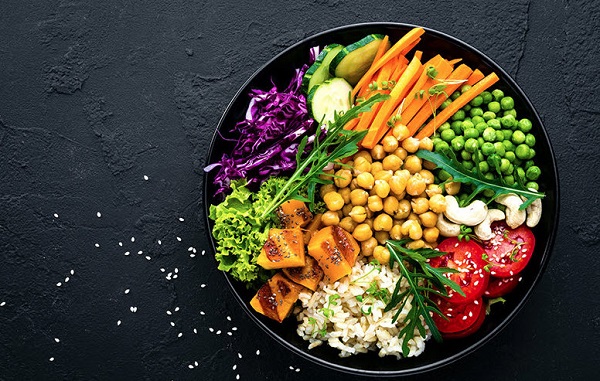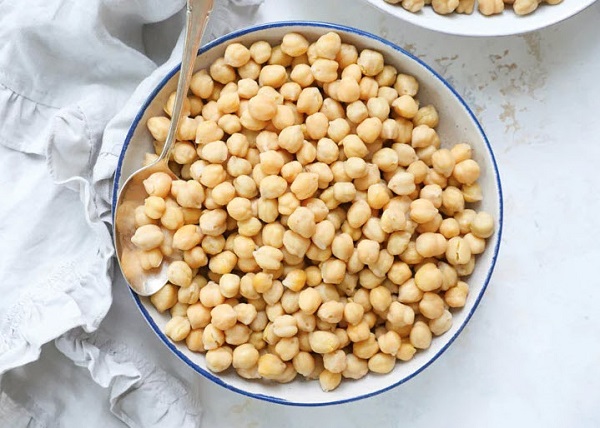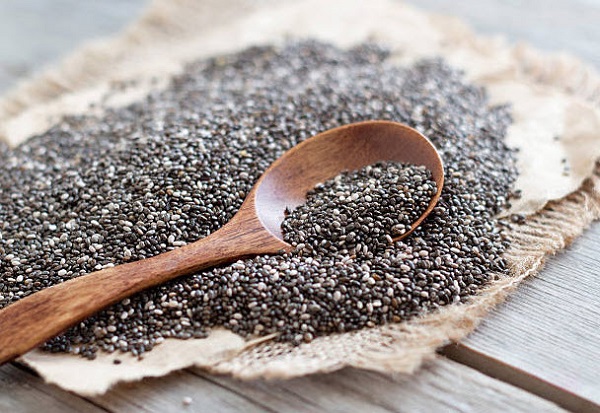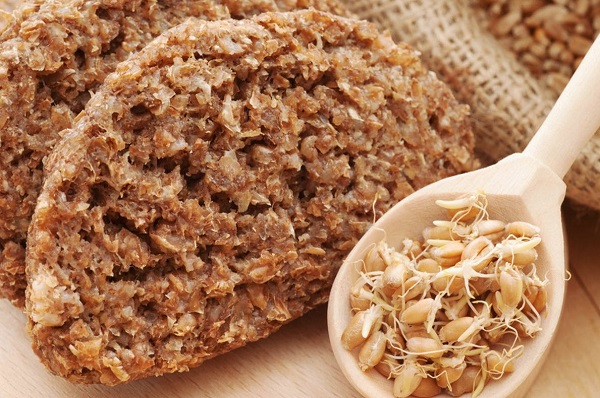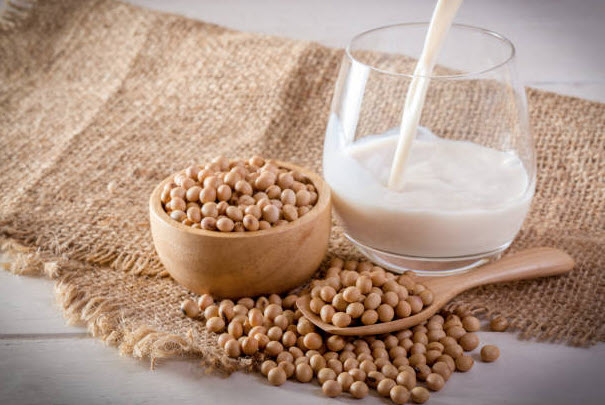Which Vegetarian Foods Are High In Protein? Are you looking for high-protein vegetarian foods? If so, you’re in luck! There are many nutrient-dense foods that are both vegetarian and high in protein. In fact, some of the most popular plant-based proteins come from legumes, nuts, and seeds. So, whether you’re a vegan or just someone who wants to add more plant-based proteins to your diet, there are plenty of options to choose from. Keep reading to learn more about some of the best high-protein vegetarian foods.
Contents
Which Vegetarian Foods Are High In Protein?
There are plenty of vegetarian foods that are high in protein, which is great news for vegetarians who want to make sure they’re getting all the nutrients they need. Here are some of the best options:
1. Tofu, tempeh, and edamame
So what’s the difference between tofu, tempeh, and edamame? All three are soy products, but they differ in terms of their preparation and protein content.
Tofu is made from soybean curds and has a firm texture. It contains about 10 g of protein per ½ cup serving.
Edamame are immature soybeans that have a slightly sweet flavor. They contain 8.5 g of protein per ½ cup serving.
Tempeh is made from fermented soybeans and has a nutty flavor. It contains about 15 g of protein per ½ cup serving.
All three soy products are good sources of protein, but tofu is the most versatile since it takes on the flavor of the dish it is prepared in. You can try tofu as a meat substitute in your favorite sandwich or soup. Tofu is also a popular meat substitute in some dishes, such as kung pao chicken and sweet and sour pork.
2. Lentils
Lentils are an excellent source of protein, fiber, and key nutrients. They can be added to stews, curries, salads, or rice to give an extra boost of protein. Try red or green lentils for a hearty and nutritious meal.
Lentils are an excellent source of protein, fiber, and key nutrients. They can be added to stews, curries, salads, or rice to give an extra boost of protein. Try red or green lentils for a hearty and nutritious meal.
Lentils are a great source of protein and can be used in a variety of dishes. Add them to stews, curries, salads, or rice for a filling and nutritious meal. Red or green lentils are especially healthy choices. Each type of lentil contains 8.84 g of protein per 1/2 cup serving. So get cooking and enjoy the benefits of this power-packed legume.
3. Chickpeas
There are many ways to cook and eat chickpeas. They can be added to stews and curries, or spiced with paprika and roasted in the oven. A person can also add hummus, which is made from chickpea paste, to a sandwich for a healthful, protein-rich alternative to butter. Chickpeas are high in protein, containing around 7.25 g per ½ cup. This makes them a great food for those looking to increase their protein intake.
4. Peanuts
Peanuts are an excellent source of protein and contain healthy fats that can improve heart health. Around 20.5 g of protein can be found in a half cup of peanuts.
Peanut butter is also rich in protein, containing 3.6 g per tablespoon. This makes peanut butter sandwiches a great option for a complete protein snack.
5. Almonds
Almonds are not only a delicious snack, but they’re packed with nutrients that are good for your health. For example, did you know that almonds offer 16.5 g of protein per 1/2 cup? That’s a lot of protein! And almonds also provide a good amount of vitamin E, which is great for the skin and eyes. So next time you’re looking for a nutritious snack, reach for some almonds.
6. Spirulina
Spirulina may be a new word for many people, but this blue-green algae has been around for centuries. The Aztecs harvested it from lakes in Mexico, and it was a staple in their diet. Today, spirulina is sold as a dietary supplement and is often marketed as a superfood.
There are numerous health benefits associated with spirulina. For example, it is an excellent source of protein, containing 8 g per 2 tablespoons. It is also rich in nutrients like iron and B vitamins. Additionally, spirulina has been shown to boost the immune system and provide antioxidant protection.
If you’re looking to add more protein to your diet, spirulina is a great option.
7. Quinoa
If you’re looking for a nutrient-rich grain to add to your diet, quinoa is a great option. This grain is high in protein, with 8 g of protein in each cooked cup. Quinoa is also a complete protein, meaning it contains all the essential amino acids your body needs. In addition to protein, quinoa is also a good source of magnesium, iron, fiber, and manganese.
This grain is also highly versatile. You can use it as a replacement for pasta in soups and stews, or sprinkle it on top of a salad. Quinoa can also be eaten as the main course of a meal. No matter how you choose to eat it, quinoa is a nutritious and delicious option.
8. Mycoprotein
Mycoprotein is a protein derived from fungi. It’s a popular choice for people looking for a meat alternative, as it’s available in products like “chicken” nuggets and cutlets. Mycoprotein is high in protein, with around 13g per ½ cup serving. However, some mycoprotein products contain egg white, so be sure to check the label if you have allergies. A small number of people are allergic to Fusarium venenatum, the fungus from which mycoprotein brand Quorn is made. If you have a history of mushroom allergies or multiple food allergies, you may want to consider another protein source.
9. Chia seeds
If you’re looking for a nutritious way to add more protein, fiber, and healthy fats to your diet, then consider chia seeds. Just a few tablespoons of these tiny seeds are packed with 2 grams of protein, 5 grams of fiber, and 3 grams of heart-healthy Omega-3 fatty acids. Plus, they’re low in calories and have a neutral taste that makes them easy to add to almost any food.
To use chia seeds, try adding them to a smoothie, sprinkling them on top of a plant-based yogurt, or soaking them in water or almond milk to make a pudding. Chia seeds are available from some supermarkets, health food stores, or online retailers.
10. Hemp seeds
Hemp seeds are an excellent source of protein. Just one tablespoon provides 5 grams of protein. This makes them a great addition to any diet, especially for those who are looking to increase their protein intake. Hemp seeds can be used in a variety of ways, including as a topping on salads or soups, in smoothies, or as a crunchy addition to yogurt or oatmeal. They can also be purchased online.
11. Beans with rice
If you’re looking for a protein-packed meal, try rice and beans. This classic dish provides 7 g of protein per cup, making it a great option for vegetarians or those looking to add more protein to their diet. Rice and beans can be served as a side dish or mixed together and spread on Ezekiel bread for a savory sandwich. Either way, you’ll be getting a delicious and nutritious meal that will keep you satisfied all day long.
12. Potatoes
If you’re looking for an easy and delicious way to add more protein to your diet, try snacking on a large baked potato with 2 tablespoons of hummus. This simple snack provides 11 g of protein and is also high in other nutrients, such as potassium and vitamin C. Hummus is a flavorful addition to any potato dish and makes this snack even more satisfying. Thanks to the added protein, this snack will help keep you full and satisfied until your next meal.
13. Protein-rich vegetables
Many dark-colored, leafy greens and vegetables contain protein. Eaten alone, these foods are not enough to meet daily protein requirements, but a few vegetable snacks can increase protein intake, particularly when combined with other protein-rich foods.
For example, a single, medium stalk of broccoli contains about 4 g of protein. Kale offers 2 g of protein per cup. And 5 medium mushrooms offer 3 g of protein.
Try a salad made from baby greens with some quinoa sprinkled on top for a protein-rich meal. You could also add grilled chicken or tofu for even more protein. Experiment with different combinations of greens and toppings to find a combination you enjoy.
14. Seitan
Seitan is a delicious and healthy alternative to meat that is perfect for those on a vegetarian or vegan diet. Seitan is made from wheat gluten, which is the main protein found in wheat. This means that it is high in protein and contains all of the essential amino acids your body needs. Seitan is also low in fat and calories, making it a great choice for those looking to lose weight or maintain a healthy weight.
When cooked in soy sauce, seitan becomes a complete protein source offering 21 g per 1/3 cup. This makes it an excellent choice for those who are looking to increase their protein intake without increasing their calorie intake. Seitan is also a good source of iron and magnesium, which are two minerals that are often lacking in vegetarian and vegan diets.
If you are looking for a delicious and healthy meat alternative, look no further than seitan! Try it in your favorite recipes or simply cook it up with some vegetables for a quick and easy meal.
15. Ezekiel bread
Ezekiel bread is a nutritious alternative to traditional bread. It is made from whole grains, including barley, wheat, lentils, millet, and spelt. Ezekiel bread is an excellent choice for people who want a more nutritious way to eat toast or sandwiches.
Ezekiel bread offers 4 g of protein per slice. You can get even more protein by toasting Ezekiel bread and spreading it with peanut or almond butter.
16. Nutritional yeast
If you’re looking for a savory, cheesy flavor to add to your dishes, nutritional yeast is a great option. This deactivated strain of Saccharomyces cerevisiae yeast is sold commercially as a yellow powder or flakes.
Nutritional yeast has a cheesy flavor that makes it popular in dishes like mashed potatoes and scrambled tofu. It can also be sprinkled on top of pasta dishes or even enjoyed as a savory topping on popcorn.
Half an ounce (16 grams) of this complete source of plant protein provides 8 grams of protein and 3 grams of fiber. Fortified nutritional yeast is also an excellent source of zinc, magnesium, copper, manganese, and all the B-vitamins.
17. Spelt and teff
Spelt and teff are both excellent sources of nutrients, including complex carbs, fiber, iron, magnesium, phosphorus, and manganese. They also contain B vitamins, zinc, and selenium.
Spelt is a type of wheat and contains gluten, whereas teff originates from an annual grass, meaning that it’s naturally gluten-free.
Spelt and teff provide 10–11 grams of protein per cooked cup (250 grams), making them higher in protein than other ancient grains.
Ancient grains like spelt and teff are becoming increasingly popular as people look for more nutritious alternatives to wheat and other refined grains. If you’re looking to add more ancient grains to your diet, both spelt and teff are great options.
18. Green peas
Green peas are not only a good source of protein, but also a good source of fiber, thiamine, folate, manganese, and vitamins A, C, and K. A serving of green peas covers more than 25% of your daily needs for these nutrients. This makes green peas a great food to include in your diet if you are looking to improve your overall health.
Green peas are not only a delicious addition to many recipes, but they’re also packed with nutrients that are good for your health. Peas are a good source of iron, magnesium, phosphorus, zinc, copper, and several other B vitamins.
Including green peas in your diet is a great way to get more essential nutrients into your body. And there are so many delicious ways to enjoy them! Try pea-and-basil-stuffed ravioli, Thai-inspired pea soup, or pea-and-avocado guacamole. No matter how you eat them, you’ll be getting some great nutrition from green peas.
19. Amaranth and quinoa
Amaranth and quinoa are pseudocereals that are often used as substitutes for grains. Although they are not technically grains, they can be prepared in a similar way. For example, amaranth and quinoa flour can be used to make breads and other baked goods. These pseudocereals are also a good source of nutrients, including protein, iron, and fiber.
With 8–9 grams of protein per cooked cup (185 grams), amaranth and quinoa are complete sources of protein, which is uncommon among grains and pseudocereals. Plus, amaranth and quinoa are good sources of complex carbs, fiber, iron, manganese, phosphorus, and magnesium. These nutrients make amaranth and quinoa valuable for many different aspects of health, including supporting a healthy immune system, promoting gut health, and helping to maintain blood sugar levels.
Amaranth and quinoa are also gluten-free, making them a good option for people with celiac disease or gluten sensitivities. When it comes to cooking amaranth and quinoa, both can be prepared in a similar way. They can be cooked in water or broth and served as a side dish or added to soups and stews. Amaranth and quinoa can also be popped like popcorn or made into flour for baking. Because of their nutrient profile, amaranth and quinoa are two of the best grains you can add to your diet.
20. Soy milk
If you’re looking for a dairy-free alternative to milk, soy milk is a great option. It’s made from soybeans and is often fortified with vitamins and minerals. Soy milk contains 6 grams of protein per cup (244 mL) and is an excellent source of calcium, vitamin D, and vitamin B12. You can purchase soy milk in most supermarkets. It’s a versatile product that you can drink on its own or use in cooking and baking recipes. However, keep in mind that soy milk does not naturally contain vitamin B12, so I recommend picking a fortified variety.
Plant vs. animal protein
There are two main sources of protein: plants and animals. Each has its own set of benefits and drawbacks.
Plant proteins are typically lower in calories and fat than animal proteins. They’re also a good source of fiber, vitamins, and minerals. However, plant proteins tend to be incomplete, meaning they don’t contain all the essential amino acids your body needs. This means you may need to consume more plant protein than animal protein to meet your daily needs.
Animal proteins are complete proteins, meaning they contain all the essential amino acids your body needs. Animal proteins are also typically higher in calories and fat than plant proteins. However, they can be a good source of vitamins and minerals, including iron and zinc.
As a vegan or vegetarian, it’s important to get all the essential amino acids your body needs from your diet. Animal products are complete proteins, meaning they contain all the amino acids. Some plant products, such as soya beans and quinoa, are also complete proteins while others are incomplete proteins.
To make sure you’re getting all the amino acids you need, eat a varied diet of high-protein plant-based foods, such as tofu, tempeh, lentils, nuts, seeds, and quinoa. By including a variety of these foods in your diet, you’ll ensure that your body is getting all the essential amino acids it needs to function properly.
Benefits And Risks Of A Vegetarian Or Vegan Diet:
A diet free of animal products requires careful planning and research in order to ensure that a person’s nutritional needs are met. While this can be a benefit for some, as it encourages them to think more carefully about their diet and understand the nutritional content of the foods they eat, it can also prove challenging and lead to nutritional deficits.
The Academy of Nutrition and Dietetics notes that a vegetarian or vegan diet can lower the risk of some diseases, such as heart disease and cancer, and may promote weight loss. However, it is important to make sure that you are getting enough of the right nutrients when following a plant-based diet. Otherwise, you may be at risk for deficiencies in vitamins and minerals such as iron, calcium, vitamin B12, and omega-3 fatty acids. Supplements and fortified foods can help to fill in any nutritional gaps.
A 2014 study looked at the nutritional intakes of 1,475 people and found that those on a vegan diet consumed less saturated fat and dietary cholesterol than those on omnivorous diets. However, they also had the lowest protein, calcium, and energy intake scores. Vitamin B-12 levels were normal, possibly because people used fortified foods.
This study shows that while a vegan diet has some health benefits, it is important to make sure that you are getting enough nutrients from other sources. Fortified foods can help, but it is still important to pay attention to your overall nutrient intake. Make sure you are getting enough protein, calcium, and energy from other sources to maintain good health.
A vegan diet tends to be low calorie, making it easier for vegans to manage their weight. Because many processed foods are not vegan, a vegan diet may preclude many unhealthful, high-sodium prepackaged foods.
Another 2017 study found that a vegan whole foods diet could significantly reduce inflammation in people with coronary artery disease. This suggests that a vegan diet may improve heart health.
The Academy of Nutrition and Dietetics stated in 2016 that people on vegetarian or vegan diets are at a lower risk of various illnesses, including: ischemic heart disease. certain cancers. type 2 diabetes. hypertension. obesity.
A study from 2017 looking at over 70,000 women found that those with a diet higher in healthful plant-based foods had a lower risk of coronary heart disease. These findings support what many experts have been saying for years; that a plant-based diet can be not only healthy, but beneficial in the prevention of some chronic illnesses.
Wacth Vegetarian Foods Are High In Protein Video:
A vegetarian diet doesn’t have to be low in protein. In fact, there are plenty of high-protein vegetarian foods choices available. If you’re looking for a way to boost your protein intake, check out this video for some great ideas. From tofu to seitan to kidney beans, there are plenty of delicious and nutritious options to choose from. So why not give vegetarianism a try? You may be surprised at just how satisfying a meatless meal can be.
FAQ’s Of Which Vegetarian Foods Are High In Protein:
What about protein supplements?
If you’re looking for an alternative to animal-based protein powders, you may be considering plant-based options. These protein powders can be made from a variety of plants, including soy, rice, peas, and hemp.
Plant-based protein powders can be complete or incomplete proteins. Complete proteins contain all of the essential amino acids your body needs, while incomplete proteins lack one or more of these amino acids.
The American Dietetic Association (ADA) notes that while food supplements can help people meet their daily nutrition goals, eating a wide variety of nutrient-rich foods is usually a better strategy for meeting those goals. Additionally, some protein supplements may be high in sugar or sodium to improve the taste, so it is important to read the nutrition labels.
If you’re considering a plant-based protein powder, be sure to talk to your healthcare provider about whether it’s right for you. Additionally, be sure to choose a quality product from a reputable manufacturer.
How Many Vegetarian In The World?
There are an estimated 1.01 billion vegetarians in the world, according to a new report by GlobalData. This number has risen significantly from 815 million in 2015, and is expected to continue to grow as more people adopt plant-based diets for health, ethical, and environmental reasons.
China has the largest population of vegetarians in the world, with an estimated 350 million people following a vegetarian diet. This is followed by India (310 million), the United States ( 55 million), and Brazil (40 million).
The number of vegetarians is also growing rapidly in developed countries such as the United States and United Kingdom, where there has been a significant increase in the number of people adopting plant-based diets in recent years. In the United States, the number of vegetarians has increased from 15 million in 2015 to 19 million in 2017.
The report found that the majority of vegetarians are female (60%), and that the average age of vegetarians is 34. The reasons for adopting a vegetarian diet vary, but the most common reasons cited are health concerns, ethical concerns for animals, and environmental concerns.
With an increasing number of people adoptiing vegetarian diets, the demand for plant-based food is also on the rise. The global market for plant-based meat is expected to reach $5.2 billion by 2030, up from $1.4 billion in 2018.
What Vegetarian Foods Have Protein?
There are a variety of vegetarian foods that have protein. These include beans, lentils, tofu, seitan, and tempeh. Nuts and seeds are also good sources of protein for vegetarians. Quinoa is another grain that is high in protein. Vegetables such as broccoli and spinach also have some protein content.
What Vegetarian Foods Have Iron?
There are a variety of vegetarian foods that have iron. This is important for vegetarians, as iron is an essential nutrient that helps to transport oxygen in the blood and prevent fatigue. Some good sources of iron for vegetarians include:
- Beans and lentils: These are both excellent sources of iron, as well as protein. Try adding them to soups, salads, or rice dishes.
- Dark leafy greens: Spinach, kale, and collard greens are all high in iron. They can be eaten raw in salads, or cooked as a side dish.
- Tofu: Tofu is a good source of iron and protein for vegetarians. It can be added to stir-fries, soups, and salads.
- Fortified foods: Some foods, such as breakfast cereals, breads, and pastas, are fortified with iron. This means that they have had iron added to them. Check the labels of these products to see how much iron they contain.
- Dried fruit: Dried apricots, raisins, and prunes are all good sources of iron. They make a great snack or can be added to cereals and baked goods.
By including these foods in your diet, you can make sure that you’re getting enough iron as a vegetarian.
Where To Buy Vegetarian Lasagna?
If you’re looking for a delicious vegetarian lasagna, there are a few places you can check out. Here are a few of our favorite spots to buy vegetarian lasagna:
- Trader Joe’s – This classic grocery store offers a variety of pre-made lasagnas, including a veggie option that is packed with flavor.
- Whole Foods – Another great option for finding vegetarian lasagna is Whole Foods. They offer a wide selection of prepared foods, including several varieties of lasagna.
- Your local grocery store – Many grocery stores now offer prepared meals, so it’s worth checking the deli or frozen food section for vegetarian lasagna options.
- Online retailers – If you can’t find vegetarian lasagna at your local stores, there are a number of online retailers that sell it.
- Restaurants – Some restaurants offer vegetarian lasagna on their menu, so it’s worth asking if they have any options available.
With so many great places to buy vegetarian lasagna, you’re sure to find the perfect option for your next meal.
Why Vegetarian Diet Is Bad?
There are many reasons why vegetarianism is not a healthy diet. First, vegetables lack many essential nutrients that our bodies need, including protein, vitamin B12, and iron. Second, a vegetarian diet can actually lead to weight gain and other health problems. Third, a vegetarian diet is often lacking in important vitamins and minerals. Finally, a vegetarian diet can actually be more expensive than a non-vegetarian diet.
Where To Buy Vegetarian Meat?
There are a growing number of options for where to buy vegetarian meat. Here are some of the most popular places to look:
- Natural food stores – These stores typically have a good selection of vegetarian meat products, including various types of “veggie burgers” and “vegan sausages.”
- Online retailers – There are many online retailers that sell vegetarian meat products, including Amazon.com and VeganEssentials.com.
- Local restaurants – More and more restaurants are offering vegetarian meat dishes on their menus. So, if you’re looking for a quick and easy meal option, this may be a good option for you.
- Specialty stores – There are also a few specialty stores that sell vegetarian meat products. For example, Whole Foods Market has a “Vegetarian Butcher” counter where you can find a variety of vegetarian meats.
- Make your own – If you’re feeling adventurous, you can also make your own vegetarian meat dishes at home. There are many recipes available online and in cookbooks.
No matter where you choose to buy your vegetarian meat, be sure to read the labels carefully. Some products may contain eggs, dairy, or other ingredients that are not suitable for vegetarians. Also, keep in mind that not all vegetarian meat products are created equal. Some may be higher in fat and calories than others, so be sure to compare nutrition facts before making your purchase.
Why Vegetarian Diet Is Healthier?
There are many good reasons to choose a vegetarian diet. For one, it is generally much healthier than a diet that includes meat. Studies have shown that vegetarians tend to have lower rates of heart disease, obesity, and cancer than those who eat meat.
Another reason to choose a vegetarian diet is that it is better for the environment. The livestock industry is a major contributor to greenhouse gas emissions, and producing meat requires far more resources than producing vegetables. A vegetarian diet can help reduce your carbon footprint and make a positive impact on the planet. In addition to a vegetarian diet, you should also exercise such as walking for 30 minutes a day.
If you’re considering making the switch to a vegetarian diet, there are many delicious and healthy options available. With a little planning, you can easily find meals that fit your taste and lifestyle.
Why Vegetarian Is Better?
There are many reasons why vegetarian is better than eating meat. Here are some of the most important ones:
- Healthier for you: A vegetarian diet has been shown to be much healthier than a diet that includes meat. Vegetarians have lower rates of heart disease, cancer, and obesity, and they tend to live longer than meat-eaters.
- Better for the environment: The production of meat requires huge amounts of land, water, and energy. It also generates a lot of pollution. So by eating less meat, vegetarians can help reduce the negative impact on the environment.
- More humane: The conditions in which animals are raised for food are often very cruel. They are typically confined to small spaces, with little or no access to the outdoors. They are also subjected to various painful procedures, such as branding and castration.
- Tastes great: Vegetarian food can be just as delicious as meat-based dishes. With all the different types of vegetables, grains, and beans available, there are endless possibilities for creating tasty vegetarian meals.
- Saves money: Meat is typically one of the most expensive items in the grocery store. So by eating less meat, vegetarians can save a lot of money.
There are many good reasons to consider a vegetarian diet. If you’re looking to improve your health, help the environment, or simply enjoy some delicious food, then vegetarianism may be the right choice for you.
Disclaimer:
Above article is only for knowledge purpose. Please contact your healthcare provider before using any of above medicine or method. for any query or personal consultation according to your health condition, please contact your doctor.

